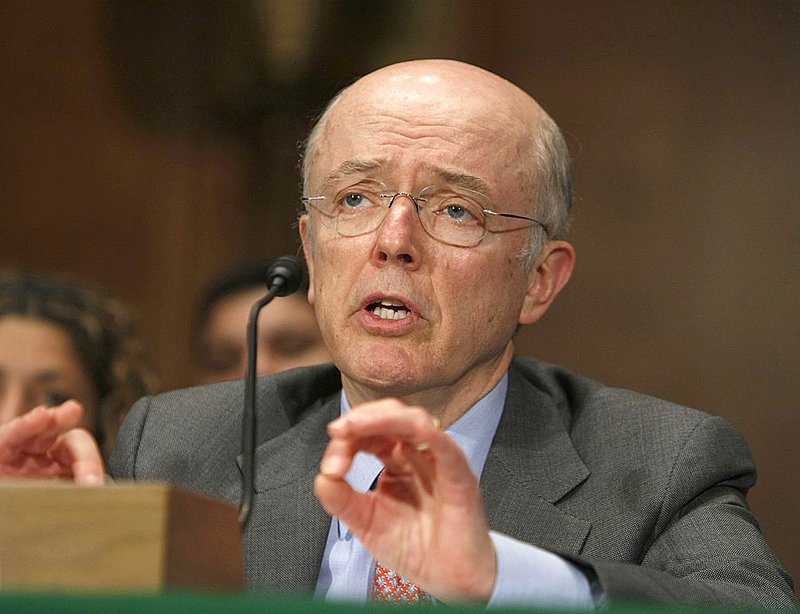WASHINGTON — Herb Allison, the head of the government’s $700 billion financial-bailout program, announced on Wednesday that he would resign. He is the latest in a series of departures from President Barack Obama’s economic team.
Allison, who had served as head of the bailout program since April 2009, said in a letter to colleagues atthe Treasury Department that they had accomplished a great deal and helped to stabilize the financial system.
The Troubled Asset Relief Program, the formal name for the bailout program that began during former President George W.Bush’s administration, has been widely criticized by the public as a rescue for wealthy bankers who took extraordinary risks.
Allison will be succeeded as head of the program by Tim Massad, 54, who will become acting assistant Treasury secretary for financial stability while the administration looks for a permanent successor.
Before joining the government, Massad had been a partner for 17 years at the New York City law firm of Cravath, Swaine & Moore.
Allison’s resignation is the latest departure from the administration’s economic team, which has been under fire from Republicans in Congress and many voters. Peter Orszag, Obama’s budget director, and Christina Romer, head of the president’s Council of Economic Advisers, departed in recent weeks. The White House announced Tuesday that Lawrence Summers, the president’s top economist, would leave at the end of this year.
Treasury Secretary Timothy Geithner is the only member of Obama’s top-tier economic advisers to remain with the administration. There was speculation that Obama might turn to a corporate executive to replace Summers as a way to deflect criticism that the administration is anti-business.
With unemployment remaining stuck at high levels, Democrats are bracing for heavy losses in the approaching congressional elections.
The bailout program became a frequent target of attacks from Republicans and the general public.
Many people questioned the move to bail out big banks at a time when unemployment was surging and thousands of Americans were losing their homes to foreclosure.
Geithner, in a brief Treasury ceremony marking Allison’s departure, said Allison and the other employees overseeing the program had worked hard to make it a success.
He said the $700 billion rescue effort will end up costing taxpayers around $66 billion, according to the latest estimates from the Congressional Budget Office. Geithner said that was a fraction of the amount the government had once estimated the program would cost.
“While TARP became a four-letter word, while politicians decried its existence and doubted its effectiveness, you kept at it, working tirelessly to recapitalize the banking system and restart the basic lending markets critical to economic activity,” Geithner told the Treasury employees.
Allison, the former head of Merrill Lynch, was tapped by former Treasury Secretary Henry Paulson to run Fannie Mae, the Federal National Mortgage Association, after the mortgage giant was taken over by the government in the fall of 2008. He took over the bailout program in April 2009, succeeding Neel Kashkari, the first head of the bailout program and a holdover from the Bush administration.
The Troubled Asset Relief Program, which was created by Congress in October 2008 at the height of the financial crisis, cannot commit money to new programs as of Oct. 3. It will continue to support existing programs.
Business, Pages 25 on 09/23/2010
